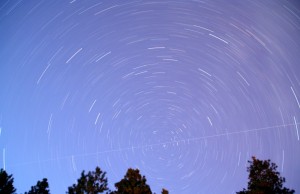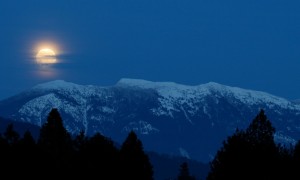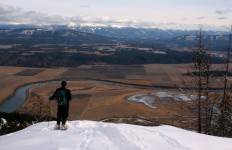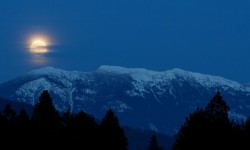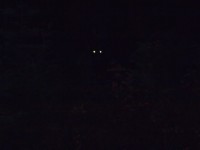The timing was perfect–winter camping under an almost full moon on a clear night. Moonlight illuminated the snow-covered meadow allowing us to see every tree. The stars twinkled overhead against a backdrop of glowing mountains and alpine fir spires.
Winter is an ideal time to look at constellations and the moon. With over fourteen hours of darkness this time of year, you don’t even have to stay up late to stargaze. The only caveat is having to bundle up to stay warm, which isn’t a problem when your camping because you never un-bundle.
A few constellations are easy to find and can be used as a guide to find other constellations. A few distinct ones are the Big Dipper, Little Dipper, Orion and Cassiopeia. The Big Dipper is actually part of the constellation Ursa Major (The Great Bear) but it is more identifiable than the whole constellation. The Little Dipper, also known as Ursa Minor (Little Bear), begins at the North Star (Polaris). These two plus Cassiopeia are found in the northern sky. Cassiopeia (The Queen) consists of five stars in a skewed W- or M-shape.
In the southern sky is Orion (The Hunter) whose bright stars stand out. The brightest part of this constellation is his body–imagine him with a star on each shoulder, neck, both knees and three on his belt–and you’ll see Orion. He is also holding a club up with his right hand and a shield in his left–it may also look like he is pulling back a bow.
These are just a few of the 88 constellations in the sky, some of which need more of an imagination than others to picture. As we revolve around the sun, the backdrop of stars changes throughout the year, mainly the ones in the southern portion of the sky. Orion is a constellation we only see in the winter months.
Stargazing is best during a new moon because a full moon will overpower the dimmer stars. However, looking at a full moon through binoculars or telescope can be incredible. When looking at the moon, you’ll always see the same side–like looking at a globe and only seeing North and South America. This happens because the moon rotates enough each day to compensate for its orbit around Earth. In other words, it takes the moon 27.3 Earth days to complete one rotation around its axis and one complete orbit around Earth.
The moon passes through various phases as it orbits Earth. Starting after a new moon, a slight crescent begins to show, this is called a waxing crescent until a quarter of the moon is illuminated (with waxing meaning “growing” and crescent meaning “less than half”). After the first quarter, the moon is considered a waxing gibbous (with gibbous meaning “more than half”). After a full moon, the moon is called a waning gibbous until the third quarter and than a waning crescent until the new moon (with waning meaning “shrinking”).
As the waxing crescent grows the last week of December, look to the night sky to stargaze during the dark evenings. If you happen to be out on the night of January 3, keep an eye upwards for the Quadrantids meteor shower, which is expected to be one of the year’s most active.

